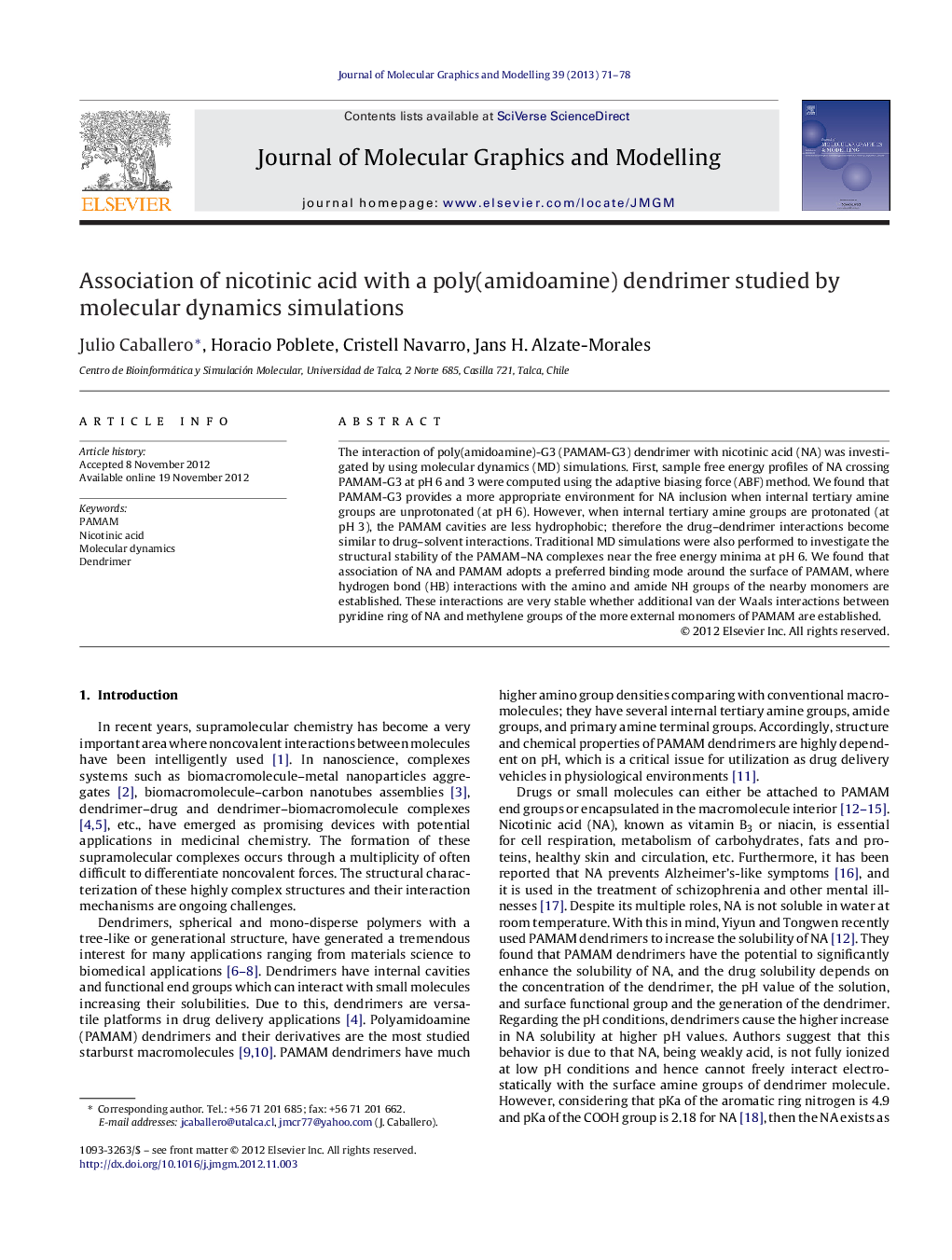| کد مقاله | کد نشریه | سال انتشار | مقاله انگلیسی | نسخه تمام متن |
|---|---|---|---|---|
| 443433 | 692722 | 2013 | 8 صفحه PDF | دانلود رایگان |

The interaction of poly(amidoamine)-G3 (PAMAM-G3) dendrimer with nicotinic acid (NA) was investigated by using molecular dynamics (MD) simulations. First, sample free energy profiles of NA crossing PAMAM-G3 at pH 6 and 3 were computed using the adaptive biasing force (ABF) method. We found that PAMAM-G3 provides a more appropriate environment for NA inclusion when internal tertiary amine groups are unprotonated (at pH 6). However, when internal tertiary amine groups are protonated (at pH 3), the PAMAM cavities are less hydrophobic; therefore the drug–dendrimer interactions become similar to drug–solvent interactions. Traditional MD simulations were also performed to investigate the structural stability of the PAMAM–NA complexes near the free energy minima at pH 6. We found that association of NA and PAMAM adopts a preferred binding mode around the surface of PAMAM, where hydrogen bond (HB) interactions with the amino and amide NH groups of the nearby monomers are established. These interactions are very stable whether additional van der Waals interactions between pyridine ring of NA and methylene groups of the more external monomers of PAMAM are established.
Figure optionsDownload high-quality image (243 K)Download as PowerPoint slideHighlights
► The nicotinic acid (NA) interacts with the dendrimer PAMAM with a pH dependence.
► Models of complexes NA–PAMAM-G3 were studied using molecular dynamics at pHs 3 and 6.
► Free energy profiles indicate that PAMAM–drug interactions are better at pH 6.
► Electrostatic potential shows that PAMAM induces an electric field which attracts NA.
► NA–PAMAM complex is formed when electrostatic and VDW interactions are favorable.
Journal: Journal of Molecular Graphics and Modelling - Volume 39, February 2013, Pages 71–78